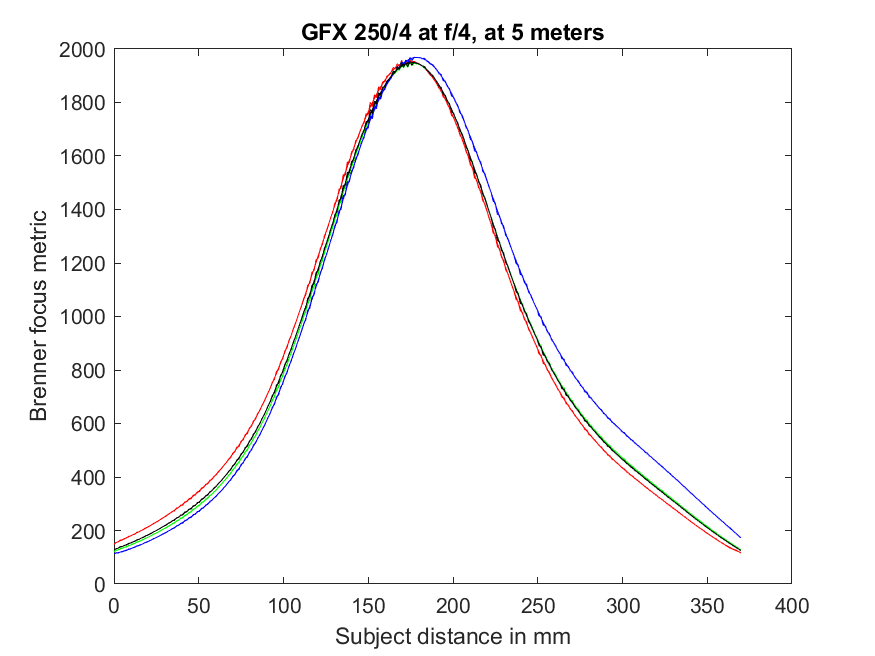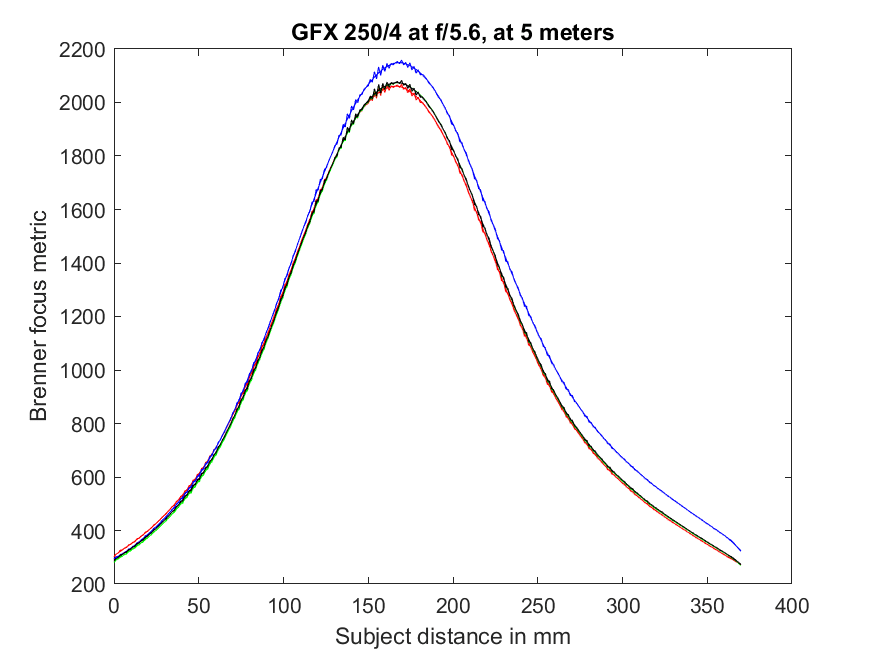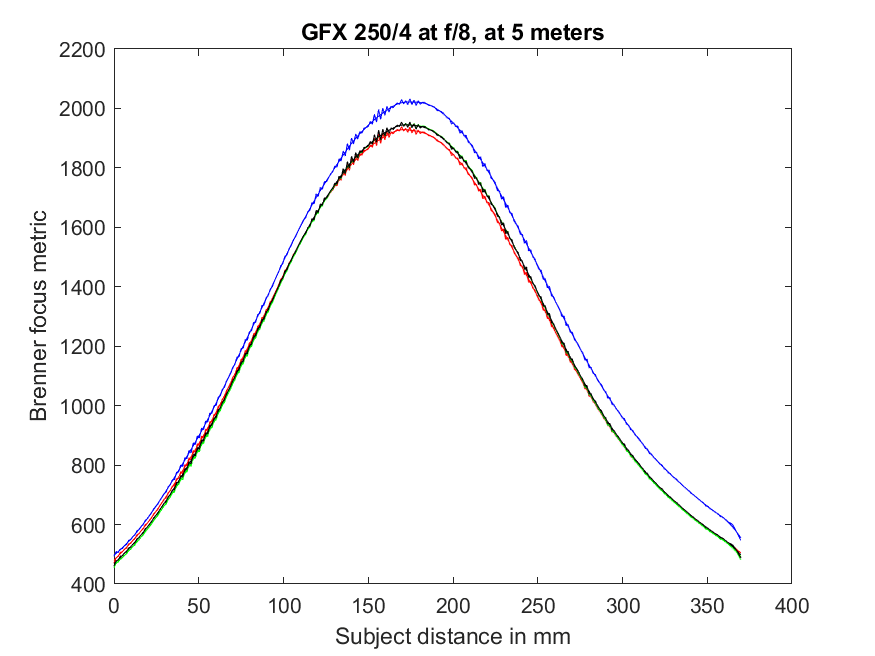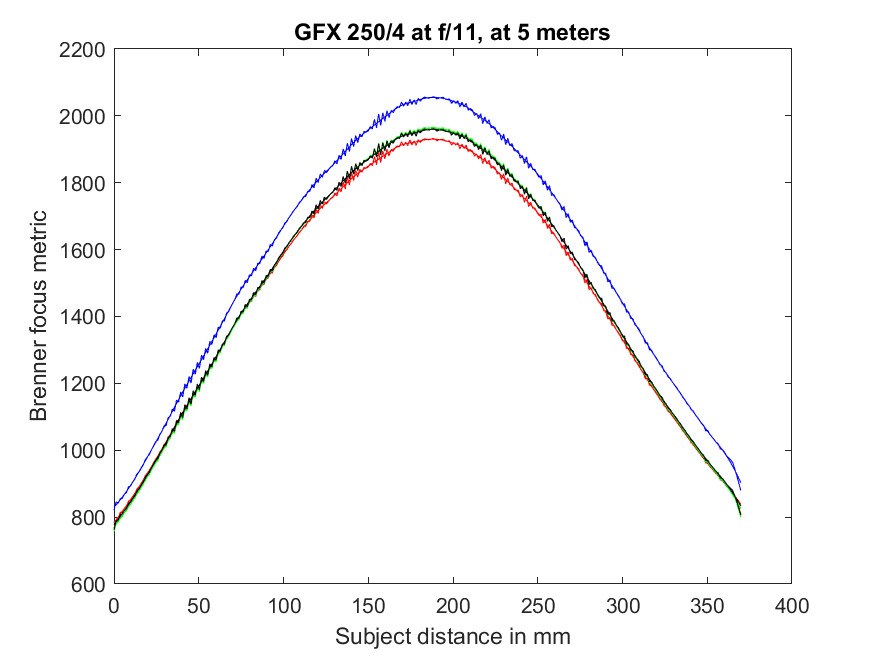This is a continuation of a series of posts on the Fuji GFX 50S. You should be able to find all the posts about that camera in the Category List on the right sidebar, below the Articles widget. There’s a drop-down menu there that you can use to get to all the posts in this series; just look for “GFX 50S”. This is the fifth post in a series on the Fuji 250 mm f/4 lens for the GFX.
A reader has noted anomalous performance with his 250/4 that he thinks might be related to the way that defocusing relates to sharpness.
In the test images, the lower part of the picture is sharper than 30% higher in the picture, the forest is then sharper again and of course you can not see it in the sky. I initially believed in decentring, but it looks more like a distance plane – but I’m still unsure.
I looked at some of the sharpness vs distance graphs from my previous tests:
They look just like you’d expect them to look. So, if the reader’s lens has a problem, it does not appear to be design-related.




Erik Kaffehr says
Hi Jim,
Have you discussed Brenner Focus Metric? I have found some references on the web but no free article.
JimK says
The sharpness measure I am using is Brenner’s focus criterion (Santos, A.; de Solorzano, C. O.; Vaquero, J. J.; Peña, J. M.; Mapica, N. & Pozo, F. D. “Evaluation of autofocus functions in molecular cytogenetic analysis”. 1997
Earlier discussion was here:
https://blog.kasson.com/d850/70-200-2-8e-at-200mm-d850-pdaf-tuning/